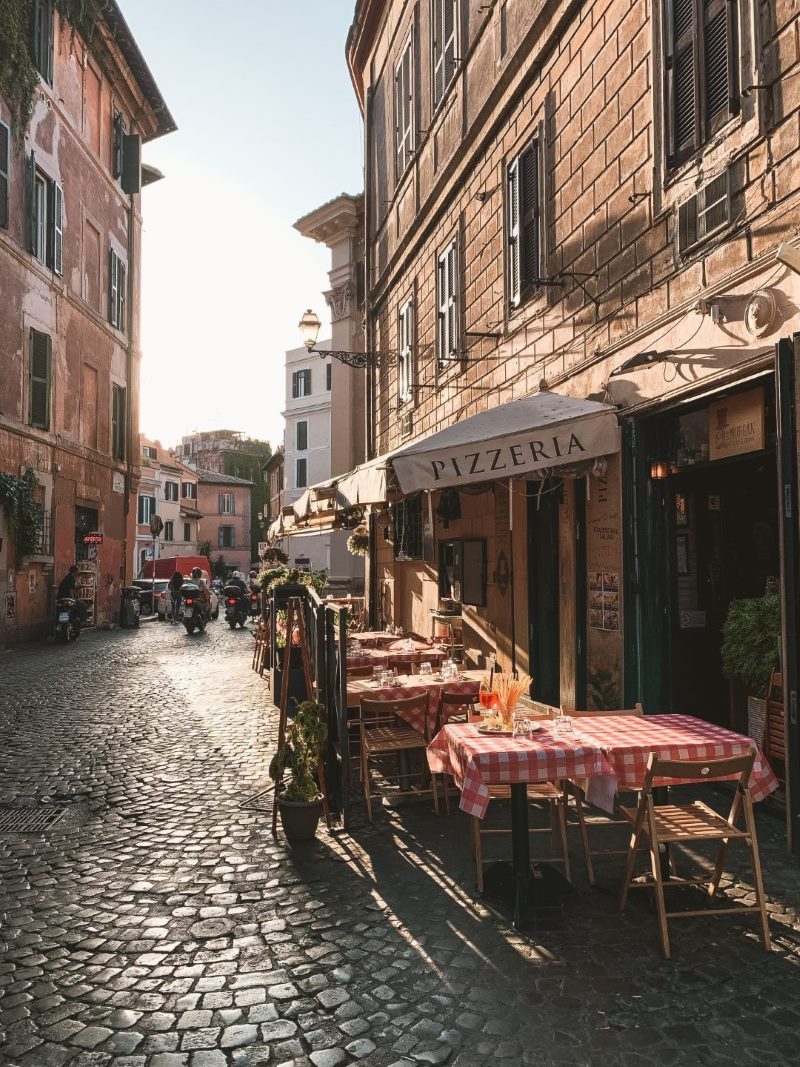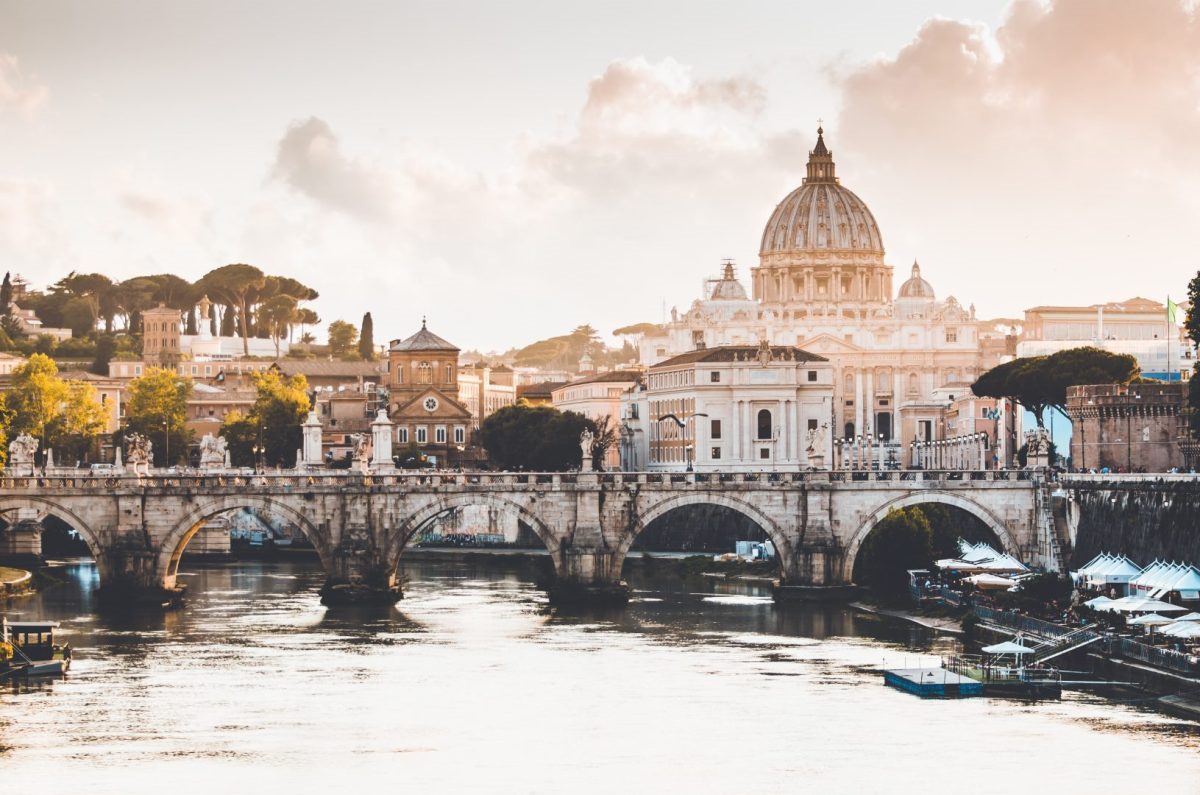How to Plan Your Rome Walking Tour and Pizza Making Experience
Rome is a city with rich Italian history, and it is known for its architecture and art. It also has a rich culinary heritage, and what better way to experience Rome’s food culture than by taking a walking tour that culminates in a pizza making class? Join us on a walking tour of Rome to see infamous highlights such as the Spanish Steps, Trevi Fountain, and Piazza Navona, before you head to a local restaurant to learn how to make an authentic Roman pizza.Overview of the Tour
On this tour, you will have the chance to learn how to make pizza in the traditional Roman way. You will visit some of Rome’s most famous attractions, and there will be ample opportunities to take pictures and ask your guide any questions you may have about the city’s history and culture. The tour will commence at Via del Fiume 7, where you will meet your guide. The starting point of the tour is near the Piazza del Popolo.Why Choose a Walking Tour
Walking tours are an excellent way to explore Rome because they allow you to avoid the stress of getting lost or needing directions. Your guide will take you through Rome’s winding streets, pointing out landmarks that are of historical, cultural, or artistic significance. As they narrate the tale of Rome, you’ll learn interesting facts and anecdotes about the city, making your experience not just visually enriching but also intellectually stimulating.What to Expect
The walking tour will take up approximately one and a half hours, giving you ample time to soak in the rich essence of Rome. After that, you will head to a restaurant where you will be introduced to a “piazzaiolo,” who will teach you how to make Roman pizza in a typical wood-fired oven. This process will take roughly one and a half hours. You will come to know the nuances of stretching and kneading the dough before finally baking it to perfection.What’s Included
Bottled water, food tastings, lunch, and non-alcoholic drinks are included with your tour. You can purchase alcoholic drinks separately. It is a great opportunity to taste authentic Italian cuisine and take part in a fun activity that is guaranteed to be enjoyed by people of all ages.Meeting and Pickup
The tour’s start and end points are Via del Fiume 7 and Campo de’ Fiori, respectively. The meeting point is near Piazza del Popolo, and it’s effortless to find. Your guide will be waiting for you when you arrive at Via del Fiume 7.Book Your Tour Now
If you are looking for a fun way to experience Italian culture, taking a walking tour followed by a pizza making class is something you shouldn’t miss. Our tour provides you with an opportunity to walk through Rome’s streets, breathe in the city’s cultural heritage and architectural beauty, and finally engage in creating something delicious. By the end of the tour, you’ll be a certified “pizzaiolo”. Come join us on this amazing journey by booking your spot today. Book the tour here.
Frequently Asked Questions about Rome
If you are planning a visit to Rome, you may have some questions about the city. Here are some frequently asked questions about Rome to help you plan your trip.1. What is the best time of year to visit Rome?
Rome is a great city to visit any time of the year, but the best time to visit is during the shoulder seasons of spring (April to June) and fall (September to October). The weather is mild during these seasons, and there are fewer crowds than during the summer months. However, keep in mind that the summer months (July and August) can be exceedingly hot, with temperatures reaching above 30 degrees Celsius.2. What should I pack for my trip to Rome?
It is always a good idea to pack clothing that is appropriate for the current weather conditions. If you are visiting Rome during the summertime, lightweight clothing is recommended, as temperatures can be very hot. It is also recommended to pack comfortable walking shoes, as many of Rome’s historical sites are best explored on foot. You may also want to pack sunscreen, sunglasses, and a hat to protect yourself from the sun.3. How do I get around Rome?
Rome has an extensive public transportation system that includes buses, trams, and a metro system. Tickets can be purchased at metro and train stations, or at tobacco shops and newsstands. Alternatively, taxis and ride-sharing services are also available. However, be aware that taxis in Rome can be expensive, and traffic can be quite busy during peak times.4. How much money should I budget for my trip to Rome?
The cost of a trip to Rome will depend on many factors, such as your travel style, accommodations, and the activities you plan to do. However, a budget of around €100 to €150 per day should be enough for most visitors, including meals, transportation, and entrance fees to Rome’s historical sites.5. Should I book tickets in advance for Rome’s historical sites?
It is highly recommended to book tickets in advance for popular attractions, such as the Colosseum, Vatican Museums, and the Sistine Chapel. This will allow you to skip the lines and save you time during your visit. Some sites, such as the Colosseum, also offer combined tickets that allow you to visit multiple attractions for a reduced price.6. Is it safe to drink tap water in Rome?
The tap water in Rome is safe to drink, but many locals and visitors choose to drink bottled water as it is more convenient. You can purchase bottled water at grocery stores, convenience stores, and vending machines throughout the city.7. What are some must-see historical sites in Rome?
Rome is full of historical sites, but some of the must-see attractions include the Colosseum, the Roman Forum, the Pantheon, the Vatican Museums, and the Sistine Chapel. Other notable attractions include the Trevi Fountain, the Spanish Steps, and the Piazza Navona.8. What is the food like in Rome?
Rome is known for its delicious cuisine, which includes pasta dishes, pizza, and gelato. Some of the local specialties to try include carbonara, cacio e pepe, and amatriciana. It is also recommended to try some of the local wines, such as Chianti and Barolo.9. Where can I find the best views of Rome?
Some of the best views of Rome can be found from the top of the Vatican Dome, the top of the Vittorio Emanuele monument, and the Gianicolo Hill. The Pincio Terrace, located in Villa Borghese Park, is also a great spot to enjoy panoramic views of the city.10. What are some cultural customs to be aware of when visiting Rome?
When visiting Rome, it is important to dress appropriately, especially when entering churches and other religious sites. It is also considered polite to greet locals with a “buongiorno” (good morning) or “buonasera” (good evening), and to use “per favore” (please) and “grazie” (thank you) when speaking with locals. Additionally, try to avoid standing close to locals while waiting in line, as personal space is highly valued in Italian culture. Overall, Rome is a beautiful and historic city that offers something for everyone. By planning ahead and being aware of local customs, you can make the most out of your trip to Rome.
How to Spend Your Time as a Tourist in Rome: A Comprehensive Guide
If you’re planning to visit Rome, you’re in for a treat. The city has some of the most incredible historical and cultural attractions in the world, and there’s never a shortage of things to do or see. In this guide, we’ll take you through some of the best ways to make the most of your time in Rome, from exploring ancient ruins to enjoying the world-class food and wine the city has to offer.1. Visit the Colosseum
One of the most iconic landmarks in Rome is, of course, the Colosseum. This ancient amphitheatre dates back to 80 AD and was used for gladiatorial contests and other public spectacles. Today, it stands as a testament to the incredible engineering and architectural accomplishments of the ancient Romans. When visiting the Colosseum, it’s a good idea to book your tickets in advance to avoid long queues. You might also want to consider taking a guided tour, as this will give you a deeper understanding of the history and significance of the building.2. Explore the Vatican Museums
The Vatican Museums are home to an incredible collection of art and artefacts from throughout history, including some of the most iconic works of the Renaissance, such as Michelangelo’s Sistine Chapel ceiling. When visiting the Vatican Museums, it’s essential to book your tickets in advance and be prepared for a lot of walking. The museums are vast and have plenty to see, so it’s worth setting aside a few hours to explore thoroughly.3. Wander Through the Ancient Roman Forum
Located just a short walk from the Colosseum, the Roman Forum was the centre of political and social life in ancient Rome. Today, visitors can wander through the ruins of ancient temples, palaces, and public buildings, imagining what life might have been like in this thriving metropolis 2,000 years ago. It’s a good idea to visit the Roman Forum as part of a guided tour, as this will give you a better understanding of the significance of the different buildings and landmarks you’ll see along the way.4. Marvel at the Pantheon
The Pantheon is one of the best-preserved ancient structures in Rome, dating back to around 118 AD. This temple was originally built to honour all the gods of Ancient Rome and is renowned for its incredible dome, which was the largest unsupported dome in the world for centuries. Today, the Pantheon is a popular tourist attraction and is open to visitors most days of the week. Be sure to take some time to appreciate the incredible architecture and engineering that went into creating this stunning building.5. Visit the Trevi Fountain
No trip to Rome would be complete without a visit to the iconic Trevi Fountain. This stunning Baroque fountain features a statue of the sea god Neptune, surrounded by seahorses and other sea creatures. Visitors are encouraged to throw a coin into the fountain and make a wish – and with so much beauty and history around you, it’s not hard to feel that you’re in a place where anything is possible.6. Enjoy Traditional Roman Cuisine
Rome is known for its delicious and hearty cuisine, and there are plenty of restaurants throughout the city that offer world-class food and wine. Some of the traditional dishes you might want to try include: – Carbonara: a hearty pasta dish made with eggs, cheese, and pancetta – Saltimbocca: thin slices of pork or veal cooked with sage and prosciutto – Cacio e pepe: a simple but delicious pasta dish made with pecorino cheese and cracked black pepper Be sure to complement your meal with a glass of local wine, such as Chianti or Montepulciano.7. Take a Stroll Through the Villa Borghese Gardens
Located in the heart of Rome, the Villa Borghese Gardens offer a tranquil escape from the hustle and bustle of the city. This stunning park features manicured gardens, ornate fountains, and even a small lake where visitors can rent a boat. As you wander through the park, keep an eye out for some of the many statues and sculptures that are part of the Borghese Gallery’s vast collection, a must-visit art museum in Rome.Final Thoughts
Rome is a city that truly has something for everyone, whether you’re a history buff, an art lover, or just looking for a great meal and a glass of wine. By following this guide and taking the time to explore all that Rome has to offer, you’re sure to have an unforgettable experience and make memories that will last a lifetime.Table of Contents

